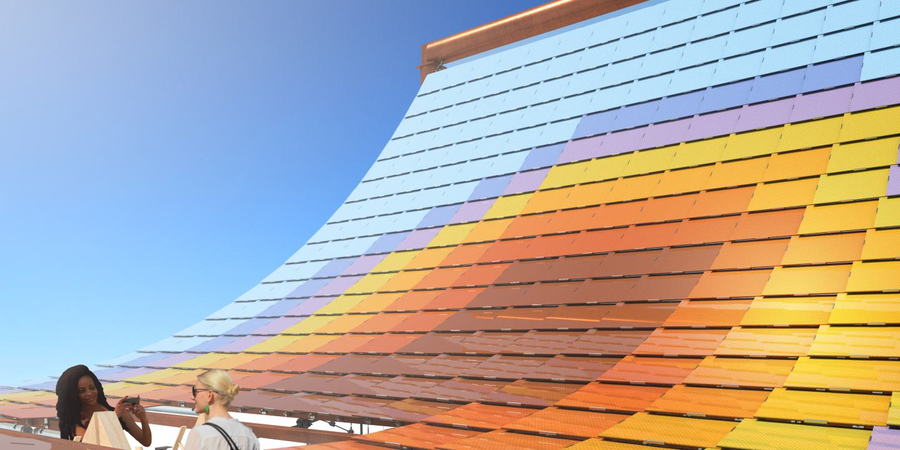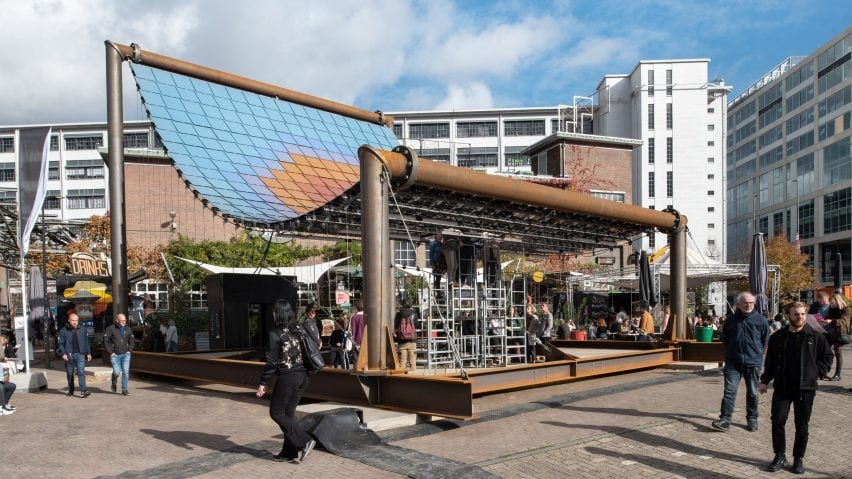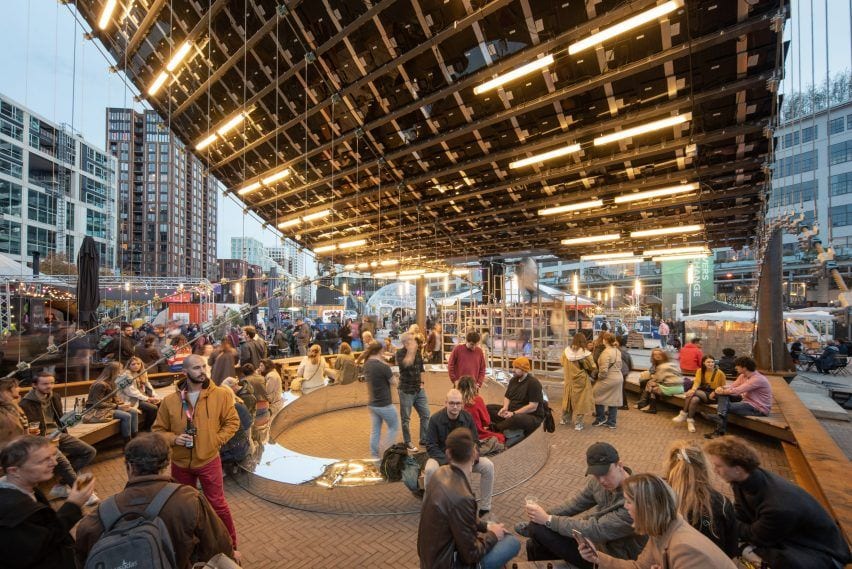Colorful Solar Pavilion Brings Shade to Dutch Design Week
For October’s Dutch Design Week, a pair of architecture firms banded together to prove that solar power can be just as beautiful as it is functional.

When she got the commission to build the central pavilion for northern Europe’s largest design event, Dutch architect Marjan van Aubel immediately looked for collaborators to help her highlight the power of the sun.


“Marjan van Aubel called us in May, asking: can you help? …Of course, it was short notice, so we had to move quickly,” explains Michiel Raaphorst, co-founder of V8 Architects. “Three days later, we met with Marjan and Miriam van der Lubbe, the Creative Head of DDW. While sketching, we came up with a surface that allows you to harvest solar energy but also forms a meaningful part of the environment.”
“We use technology to represent a natural phenomenon, and to do so, we harvest the energy from that natural phenomenon itself. So the solar pavilion represents the energy of the sun and cooperation,” Raaphorst adds. “All these parties worked together to realize this project because we all believe in Marjan van Aubel’s message: the time for a solar revolution is now.”

The two groups came up with a gazebo whose shape followed the slope of a cloth beach chair. Supported by four steel masts, the roof was fashioned from 380 wafer-thin glass solar panels in happy shades of red, orange, yellow, and blue. From above, it looked like a sun rising in a blue sky.
The collection of colorful photovoltaic tiles produced roughly 7.5 kilowatts of energy during peak performance hours, sending enough juice to an onsite battery to provide light and heat for all evening visitors. The intended effect was to allow guests to experience the sensation of sitting in the sun even in its absence.

The underside of the roof was left exposed for maximum technological transparency. “The structure contains about five thousand kilos of solar panels,” Raaphorst explains. “We deliberately left all the connections, wires, and discs visible so visitors can see how everything works. A practical view of the structure.”
The design teams also included two connecting staircases that led to a viewing porthole where visitors could have their picture taken via an app. “Up there, you suddenly find yourself in this other world: the solar field,” Raaphorst muses. Underneath the pavilion, a reflective circular bench and steel and wood seats provided places for observers to rest throughout the day.

V8 Architects and Marjan van Aubel Studio also pulled in a dozen other companies to help with parts and assembly. In keeping with the eco-friendly ethos, they borrowed most of the standard building and energy components, returning each part to its owners after the event for a circular resource design.
The architects were excited for the chance to show how earth-conscious technology like solar can and should be incorporated into everyday life. Says Raaphorst, “Currently, energy is only harvested in a techno-functional way. We explore how to integrate the sun’s energy into our daily lives so that we can love and embrace it.”

“Solar energy needs a new, more personal perspective that is part of our culture,” adds Marjan van Aubel. “This pavilion demonstrates that solar energy can be experienced and used in a new way.”




